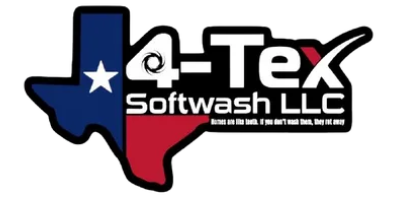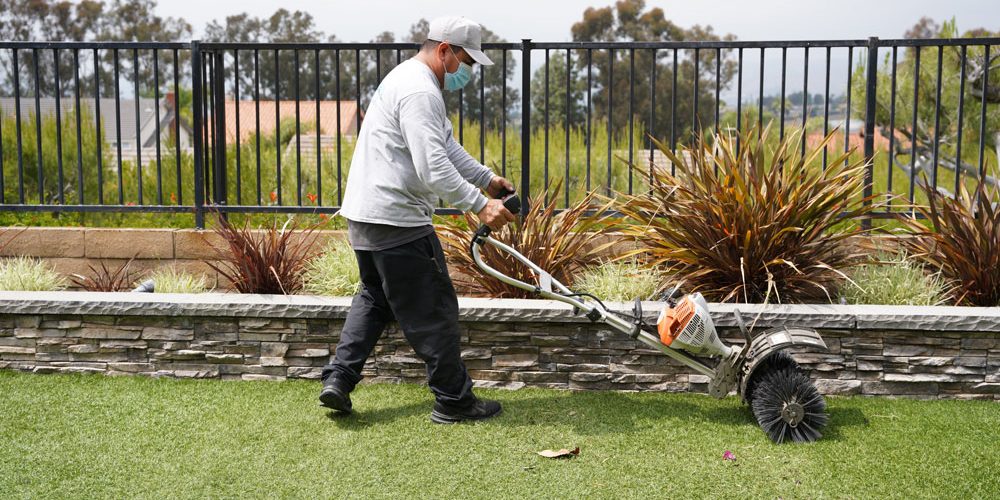Turf cleaning is an integral part of maintaining artificial turf, crucial for its appearance and durability. Whether it’s installed in your backyard, a sports complex, or a pet-friendly area, knowing how to keep your turf clean and well-maintained is vital. In this comprehensive guide, we’ll cover all aspects of turf maintenance, ensuring that your turf remains in top condition for years.
Types of Artificial Turf
Landscape Turf: Features and Common Uses
Landscape turf, used in residential and commercial areas, requires consistent turf cleaning to maintain its visual appeal. Mimicking natural grass, it’s a popular choice for gardens, rooftops, and patios, adding a touch of greenery without the upkeep of real grass.
Sports Turf: Characteristics and Maintenance Needs
Sports turf, designed for durability to withstand rigorous sports activities, necessitates a robust turf cleaning regimen. It’s essential in sporting arenas and fields, where it endures more wear and tear and is more prone to accumulating dirt and debris.
Pet Turf: Design and Special Cleaning Considerations
Pet turf, tailored for pet owners, requires unique turf cleaning methods, particularly for managing waste and odors. It’s a favored option due to its resilience against pet activities and easy-to-clean nature.
Basic Turf Maintenance
Regular Brushing Techniques
Brushing the turf regularly helps maintain the integrity of the fibers and prevents matting. For effective turf cleaning, use a soft-bristled brush to avoid damaging the turf while keeping it upright and presentable.
Debris Removal Practices
Regular removal of leaves, twigs, and other debris is essential in turf cleaning. This step not only preserves the turf’s appearance but also prevents the growth of mold and mildew, which can be detrimental to its condition.
Spot Cleaning for Spills and Stains
Immediate attention to spills and stains prevents long-term damage. For spot turf cleaning, gentle, non-abrasive cleaners are recommended to maintain the turf’s integrity.
Deep Cleaning Methods
Equipment and Tools Needed
Deep turf cleaning requires specific tools, such as a turf rake, leaf blower, and a hose or power washer, to ensure thorough cleanliness.
Step-by-Step Deep Cleaning Process
Start with debris removal, followed by a thorough brushing. Then, proceed with washing the turf using a hose or power washer, and apply a turf cleaner if needed. This comprehensive process ensures deep turf cleaning.
Frequency and Best Practices
Deep turf cleaning should be performed at least bi-annually, with more frequent cleanings in high-traffic areas. Regular deep cleaning extends the turf’s lifespan and keeps it looking fresh.
Tackling Common Turf Problems
Managing Weeds and Moss
Regular turf cleaning and maintenance can prevent the growth of weeds and moss. If they appear, use a natural weed killer to maintain the turf’s health and appearance.
Addressing Water Drainage Issues
Ensuring proper drainage is a critical aspect of turf cleaning and maintenance. Regular checks and clearing of drainage areas are necessary to prevent waterlogging and related issues.
Preventing and Treating Turf Matting
To avoid matting, regular brushing and maintenance are key. If matting occurs, gentle raking during your turf cleaning routine can help rejuvenate the turf’s look.
Pet Waste Management on Turf
Daily Cleaning Tips for Pet Owners
For pet owners, daily turf cleaning is crucial. Prompt removal of solid waste and rinsing the area helps maintain hygiene and prevent odors.
Dealing with Urine Spots and Odors
Urine spots should be addressed immediately. A mix of water and vinegar can be effective for turf cleaning and neutralizing odors, ensuring the area remains clean and odor-free.
Safe Cleaning Agents for Pets
Opt for pet-safe cleaning agents during regular turf cleaning sessions. This ensures the safety and well-being of your pets while maintaining the cleanliness of your turf.
Eco-Friendly Turf Cleaning Solutions
Natural Cleaning Agents and Their Benefits
Utilizing natural cleaning agents for turf cleaning is beneficial for the environment and safe for regular use. Household items like vinegar and baking soda are effective and eco-friendly options.
DIY Eco-Friendly Cleaning Mixes
Create your eco-friendly turf cleaning solutions using easily available household items. Mixes with lemon juice, vinegar, and baking soda are not only effective but also safe for the environment.
Impact of Eco-Friendly Practices on Turf Longevity
Adopting eco-friendly turf cleaning practices not only helps the environment but also prolongs the life of your turf. Natural cleaning agents are gentle and prevent the deterioration of turf fibers.
Professional Turf Cleaning Services
When to Consider a Professional Service
For extensive or specialized turf cleaning, such as deep cleaning or handling large, heavily used areas like sports fields, professional services can be invaluable.
What to Expect from Professional Turf Cleaners
Professional turf cleaning services provide a thorough clean, including specialized treatments for tough stains, odors, and other issues that might be challenging to handle on your own.
Evaluating Cost vs. DIY Cleaning
Consider the cost-effectiveness of professional turf cleaning services versus the time and effort required for DIY methods. In some cases, the expertise and equipment of professionals can be more cost-efficient in the long term.
Seasonal Turf Care and Cleaning
Spring and Summer Maintenance Tips
In spring and summer, turf cleaning should be more frequent due to increased usage and exposure to elements like pollen and dust.
Preparing Your Turf for Fall and Winter
Autumn and winter require specific turf cleaning considerations, such as clearing fallen leaves and prepping for potential snow or frost, to maintain the turf’s condition during colder months.
Seasonal Challenges and Solutions
Each season brings unique challenges for turf cleaning. Adapting your maintenance routine to address these seasonal changes is crucial for preserving the quality of your turf throughout the year.
Frequently Asked Questions (FAQs)
What is the best way to clean artificial turf?
Regular brushing, debris removal, and prompt attention to spills are essential. For deep cleaning, use a hose or power washer and appropriate cleaning solutions.
How often should I clean my artificial turf?
Basic cleaning like brushing and debris removal should be done weekly. Deep cleaning is recommended at least twice a year or more frequently for high-traffic areas.
Can I use regular household cleaners on my artificial turf?
It’s best to use cleaners specifically designed for artificial turf. However, mild, non-abrasive household cleaners like diluted vinegar can be used for spot cleaning.
How do I remove pet waste from artificial turf?
Solid waste should be picked up immediately, and the area should be rinsed. For urine, water mixed with vinegar can help neutralize odors and clean the area.
Is it necessary to hire professionals for turf cleaning?
While regular maintenance can be done DIY, professional cleaning might be beneficial for deep cleaning or for handling larger, more heavily used turf areas.
Can weeds grow on artificial turf, and how should I deal with them?
Weeds can occasionally sprout around the edges or through drainage holes. Regular maintenance and spot treatment with a natural weed killer can manage this issue.
How do I prevent my artificial turf from matting down?
Regular brushing with a stiff, non-metal brush helps keep the fibers upright and prevents matting.
Is artificial turf maintenance eco-friendly?
Yes, especially if you use natural, non-toxic cleaning agents and manage it properly to reduce water usage compared to natural grass.
Can I use a vacuum cleaner on my artificial turf?
Vacuum cleaners are not recommended as they can damage the turf fibers. Instead, use a leaf blower or a broom for surface debris.
How do I deal with mold or mildew on my artificial turf?
Clean the affected area with a mixture of water and vinegar or a turf-approved anti-microbial cleaner. Ensuring proper drainage can prevent mold and mildew growth.
Conclusion
Regular and effective turf cleaning is essential for the longevity and appearance of your artificial turf. By following this guide and establishing a regular cleaning schedule, you can ensure your turf remains an attractive and functional part of your space. The effort you invest in maintaining your turf pays off, both aesthetically and functionally, in the long run. Remember, a well-maintained turf not only looks better but also provides a safer, more enjoyable space for everyone who uses it.

